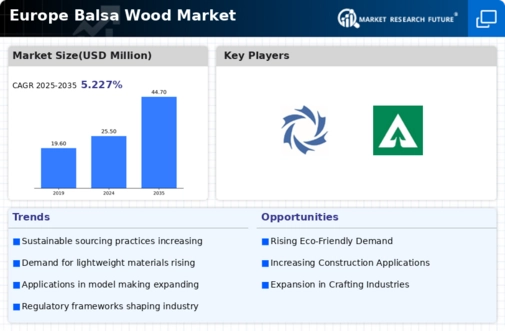Europe Balsa Wood Market Summary
The Europe Balsa Wood market is projected to grow from 25.5 USD Million in 2024 to 44.7 USD Million by 2035.
Key Market Trends & Highlights
Europe Balsa Wood Key Trends and Highlights
- The market is anticipated to experience a compound annual growth rate (CAGR) of 5.23 percent from 2025 to 2035.
- By 2035, the market valuation is expected to reach 44.7 USD Million, indicating robust growth potential.
- In 2024, the market is valued at 25.5 USD Million, reflecting a solid foundation for future expansion.
- Growing adoption of sustainable materials due to increasing environmental awareness is a major market driver.
Market Size & Forecast
| 2024 Market Size | 25.5 (USD Million) |
| 2035 Market Size | 44.7 (USD Million) |
| CAGR (2025-2035) | 5.23% |
Major Players
Sierra Balsa, J. M. Huber Corporation, Swanson Group, Balsa Nova, Ecospan, Guangxi Wood Industry, Balsa USA, Balsa Wood Products, Balsa de Brasil, Canoe Balsa, Eucatex, DunhamBush, Weyerhaeuser, Balsa Composites













Leave a Comment